You might want to know where in time your CPU cycles are being consumed and who is doing the consuming. The System Profiler provides several tools to help extract this information and drill down to quickly and easily determine the source and distribution of CPU consumption.
Requirements
To extract CPU usage metrics using the System Profiler tools, the captured log file must contain at a minimum, the Neutrino RUNNING thread state. If the RUNNING thread state is logged in wide mode, then additional information regarding CPU usage distribution over priority and partitions can also be calculated.
In order to determine the CPU load caused by interrupts, you must also log the Interrupt Entry/Exit events.
Procedure
To start, open the target log file in the System Profiler editor. By default, the initial view should show the Summary editor pane; if this isn't the case, then you can get to the Summary editor pane via the menu item .
The Summary editor pane shows a high-level overview of the log file contents:
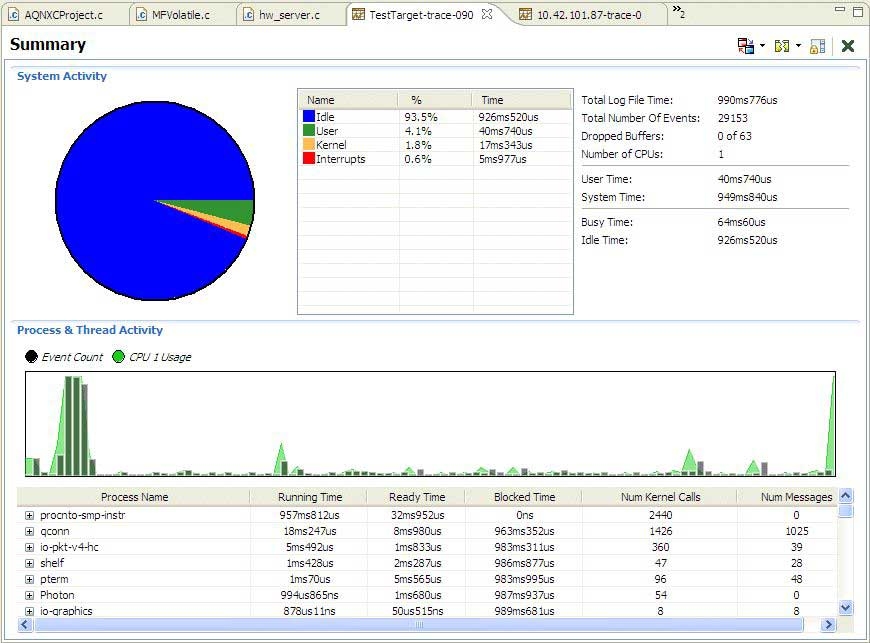
The System Activity section shows the distribution of time spent in the log file, separated into these categories:
- Idle
- The amount of time that the idle thread(s) spent running in this log file.
- Interrupts
- The amount of time that has been spent servicing hardware interrupts in this log file.
- Kernel
- The amount of time that has been spent making kernel calls (measured between kernel entry and exit events). This time doesn't include any of the time spent handling hardware interrupts.
- User
- The amount of time that non-idle threads spend in the Neutrino RUNNING state, minus the time spent performing kernel calls or in interrupt handlers.
Using these metrics, you can get a rough estimate of how efficiently your system is performing (e.g. amount of idle time, ratio of system to user time, possible interrupt flooding).
The distribution of CPU usage over the time of the entire log file is shown graphically in the Process & Thread Activity section overlaid with the volume of events that have been generated. This same data is also available as the Overview view accessed via .
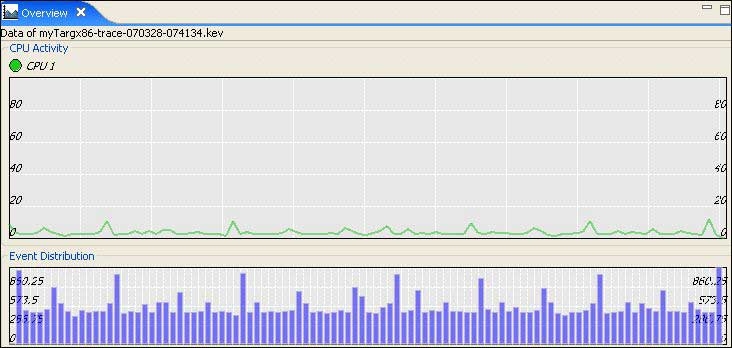
The peaks of these results indicate areas of particularly intense CPU usage and are the areas of most interest.
To focus on the particular threads that are causing these spikes, switch the editor display pane to the CPU Usage editor pane. You can do this via the menu item or by using the editor pull down.
The CPU Usage editor display charts the CPU usage of consuming elements (threads and interrupts) over time and provides a tabular view showing the sum of this usage categorized by CPU, priority, or partition.
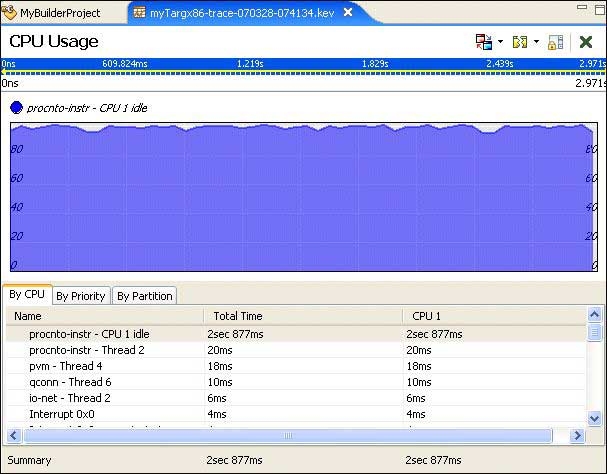
By selecting multiple elements in the table, you can stack the CPU usage to see how threads and interrupts are interacting. For example, selecting the first few non-idle CPU consumers in this example provides the following result:
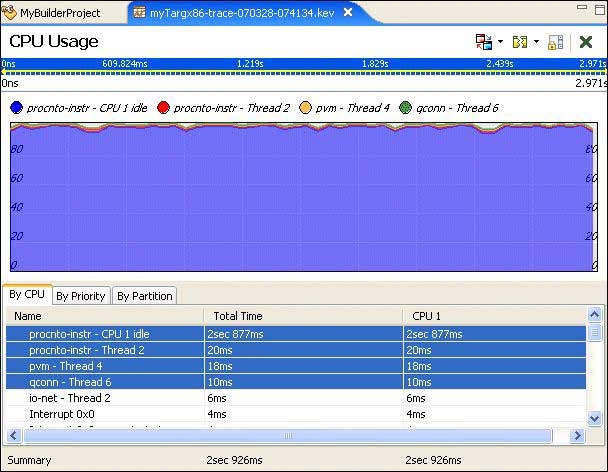
By selecting a region of the display, you can zoom in to the area of interest to further drill down into selected areas to better examine the profile of the CPU execution. As the display zooms in, the editor panel's time bar is updated to show the new range of time being examined.
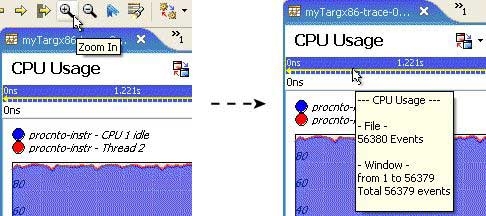
This example has shown the CPU usage for process threads, but this technique applies equally well to individual interrupt handlers, which show up as CPU consumers in the same manner as threads.
The CPU Usage editor pane lets you isolate and assign CPU consumption behavior to specific threads very quickly and easily. With this information, you can generally use a more specialized, and application centric, tool such as the Application Profiler to look more closely at execution behavior and to drill down directly to the application source code.